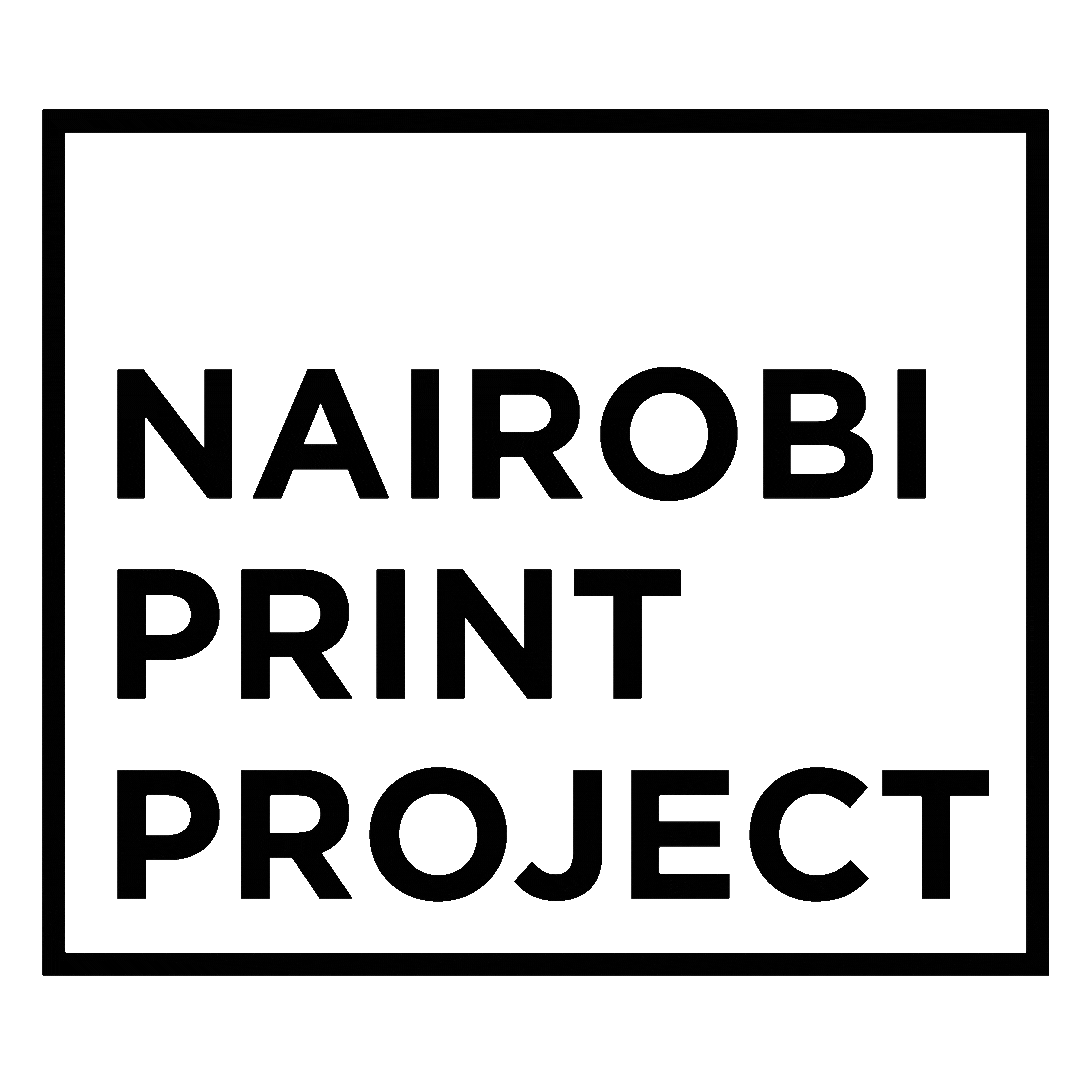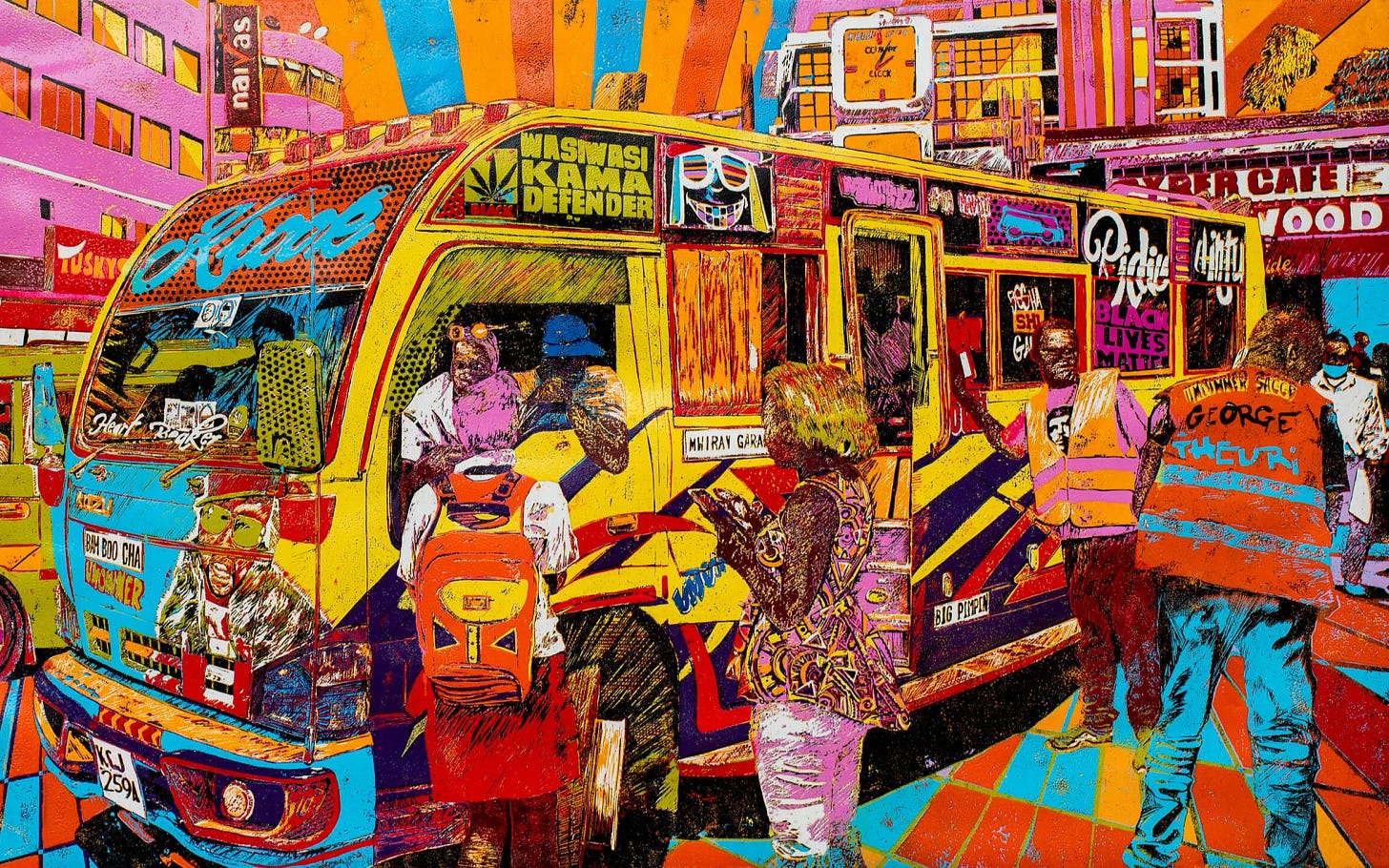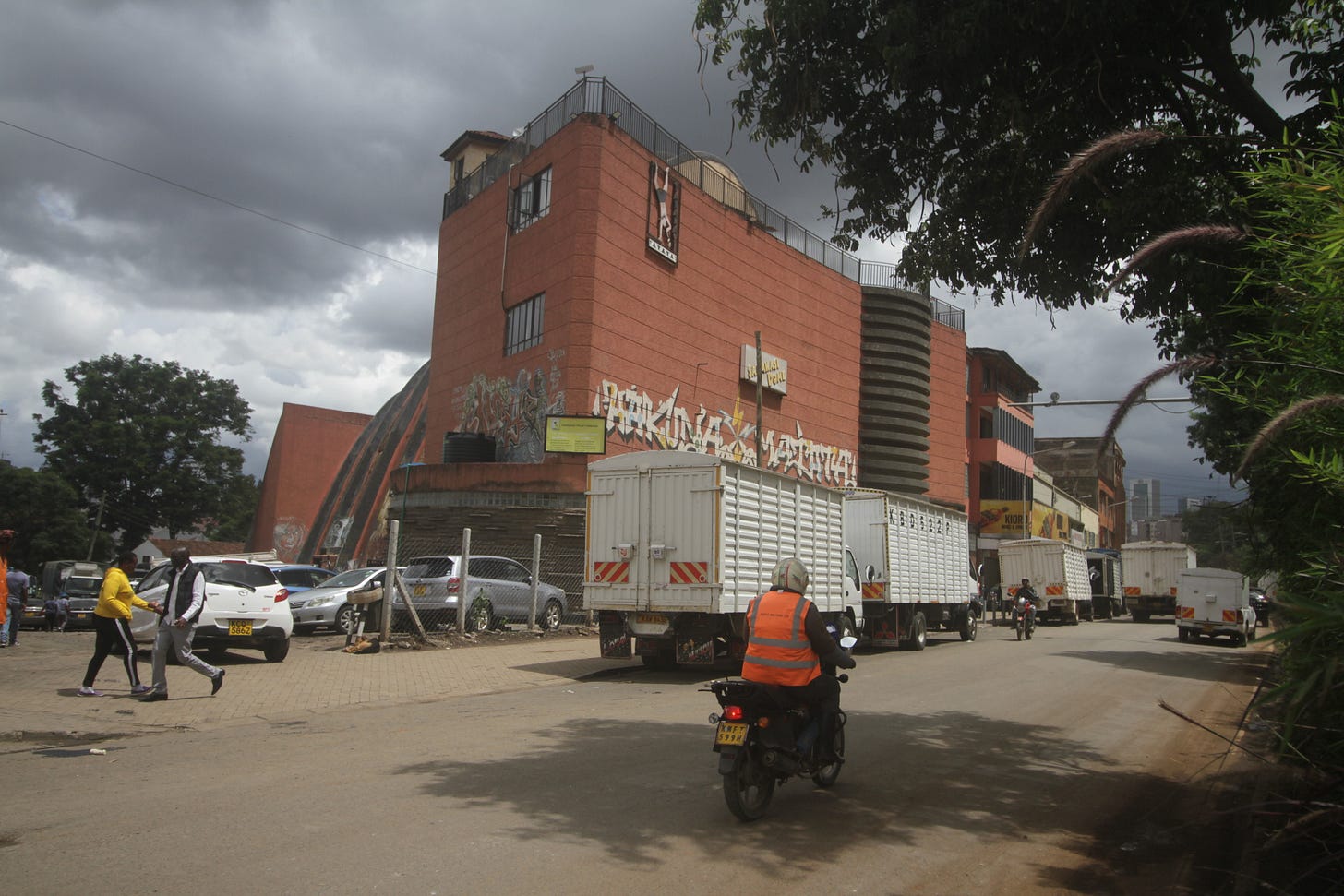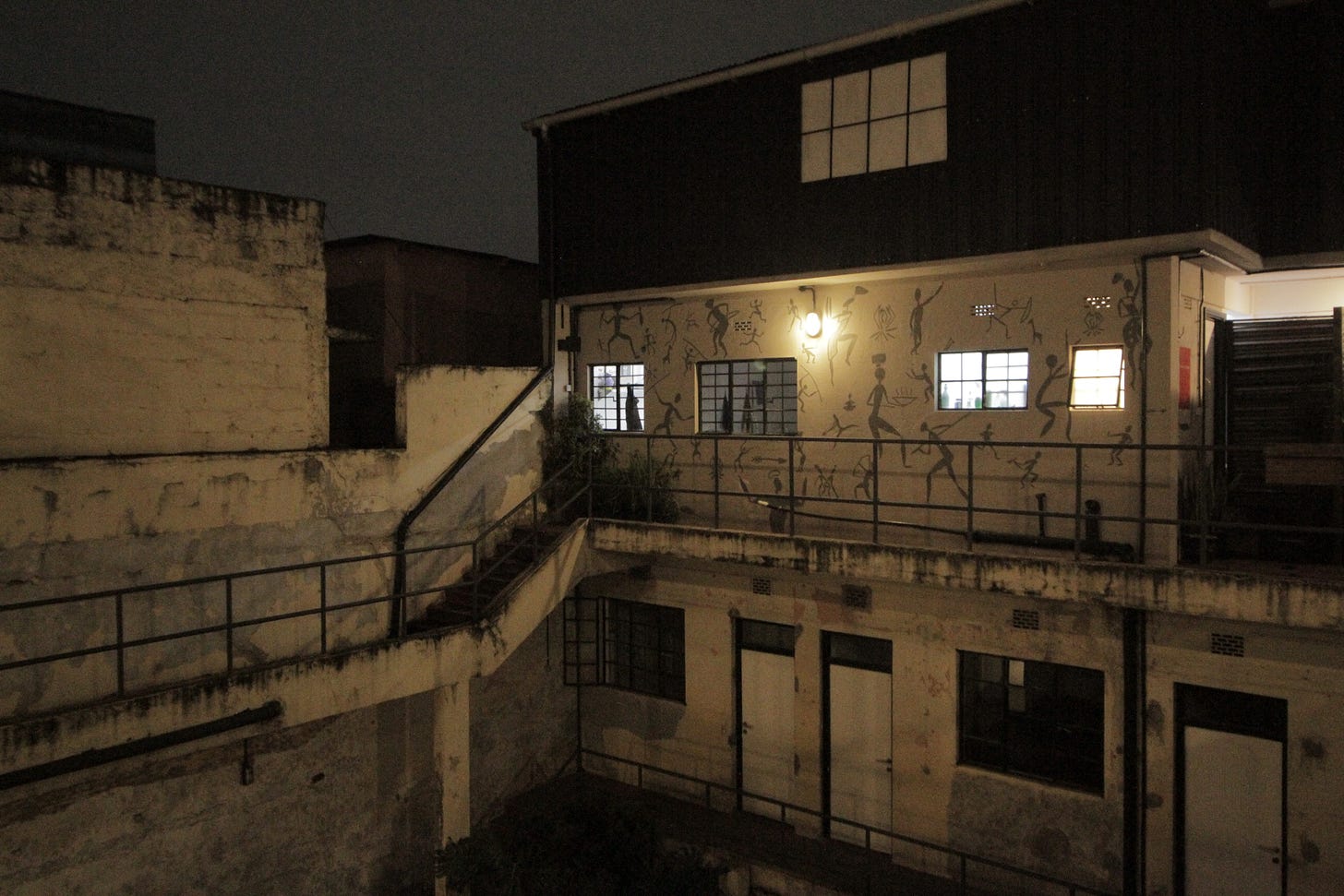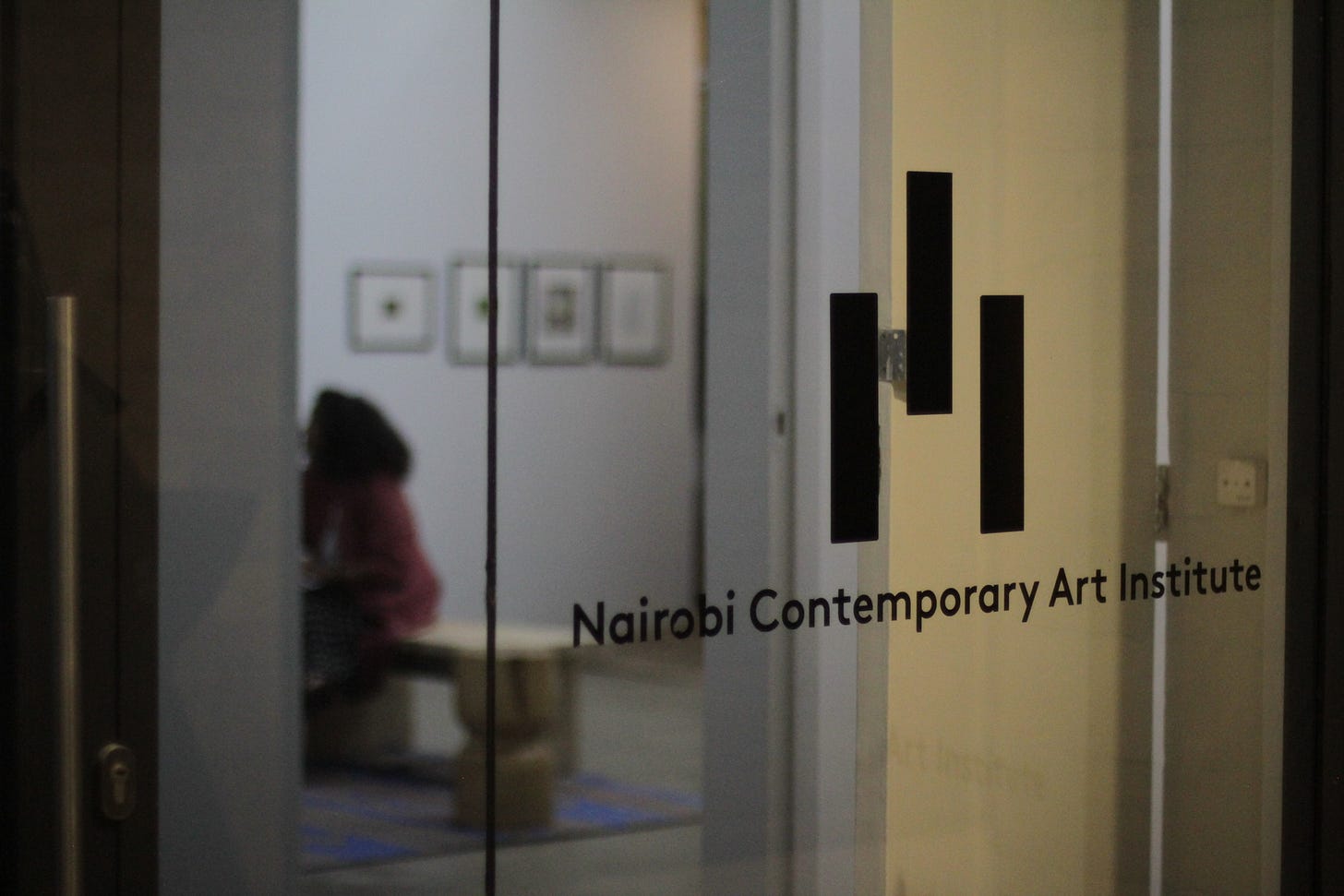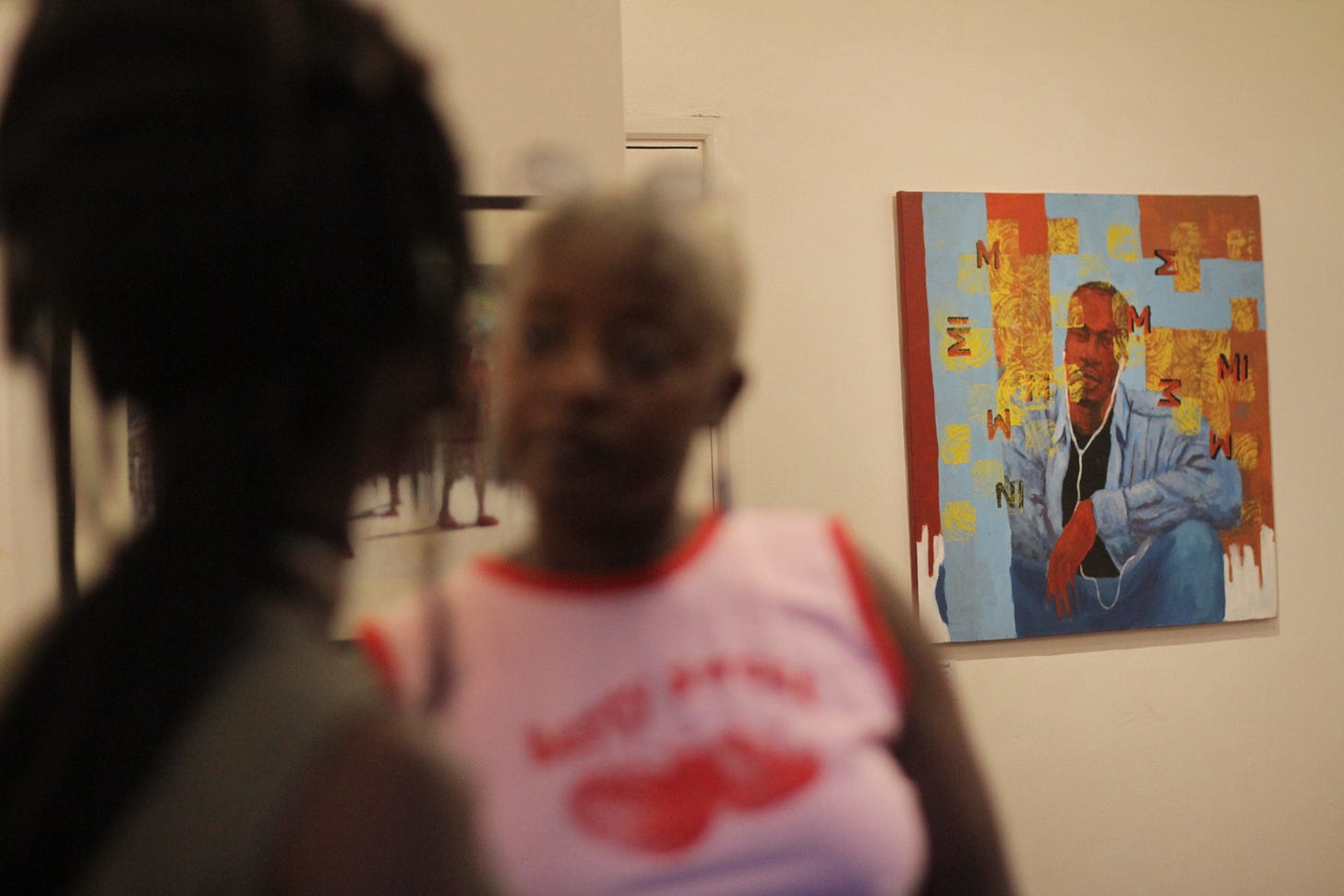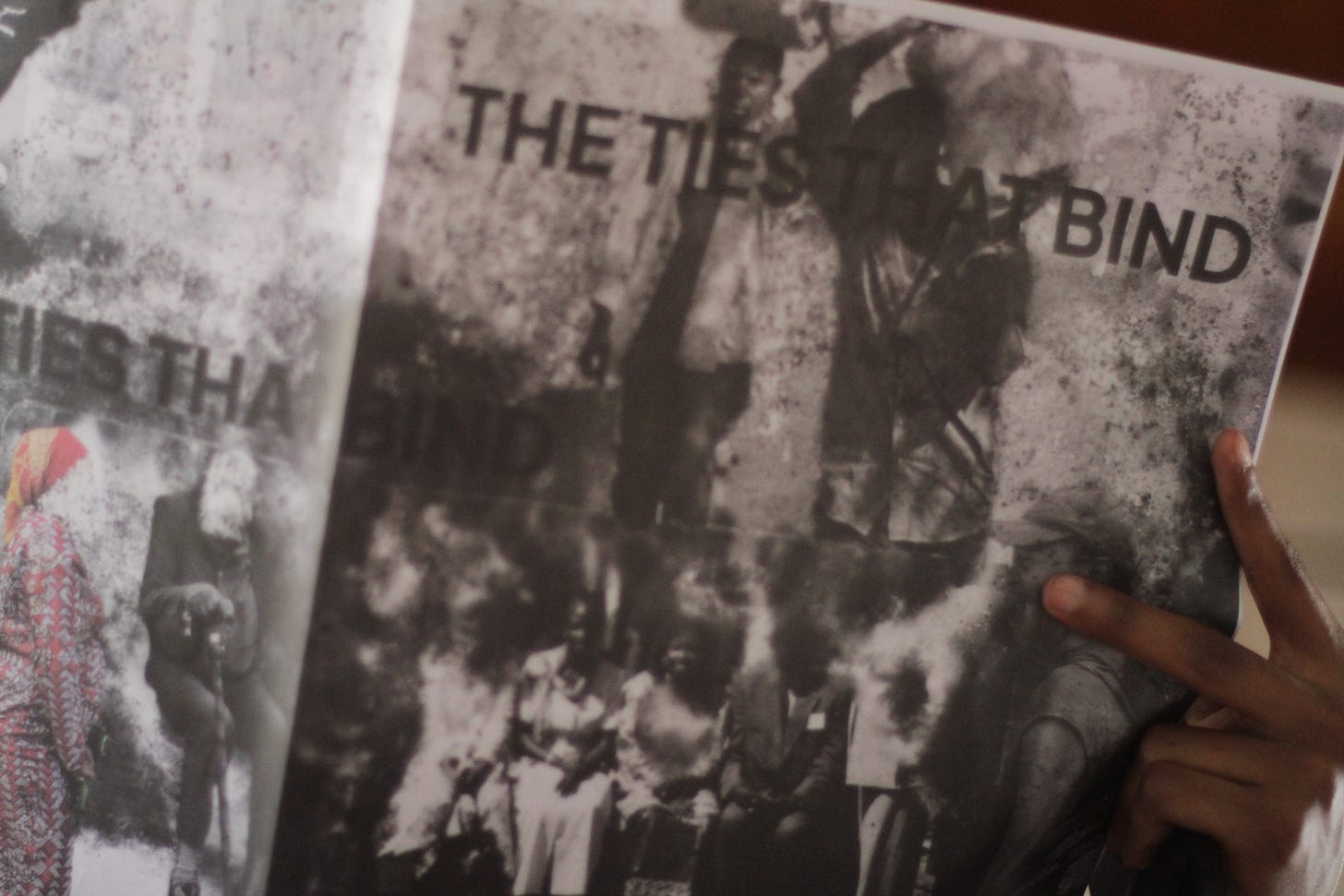BES x Nairobi Print Project
We've teamed up with NPP to feature some of the brightest writers, curators, and artists in Nairobi
If you know The Black Embodiments Studio at all, you’ll know it was a no-brainer for us collaborate with Nairobi Print Project, a platform dedicated to open access scholarship and conversation on art and curatorial practice in Africa and the Black Diaspora. Through critical engagement with historical and emerging themes in contemporary art, the project includes a journal of commissioned texts and an engaging podcast. NPP selected the contributors to this edition of The Brief—read on to see what everyone is looking at and thinking about in Nairobi, Kenya.
1 Work 3 Ways
200, 400, and 600 word takes on the same work of art
200 Words
Wainini Kimemiah
Tina Campt tells us that to see an image is not only to look with our eyes, but also to listen to it. Muraguri’s large-scale woodcut prints exemplify this by asking us to immerse ourselves in downtown Nairobi. The vibrant colours and dense composition pulls us into the sensory stew of a place perpetually in flux. An image can only capture a sliver of a moment, and the scene before us asks: can you feel downtown Nairobi on a Tuesday at 2.15 pm? Do you know that slice of time between the lull of lunchtime and rush hour? When the sun is at its brightest, smog and sweat hanging in the air? Can you hear the makangas whistling, banging on the side of the bus, yelling out their routes and the fare? Can you hear the engine rev, and, above that, the woman asking the driver for the m-pesa number to send her fare to? In the background, do you hear hawkers and shop attendants both call for customers to browse their wares? The cybercafe is humming with the sounds of printing and whirring computer fans; impossible to hear from where we the witnesses to this scene stand.
Wanini Kimemiah is a visual artist and writer born and based in Nairobi, Kenya. Their artistic practice is a research and process-based exploration of the idea of the sensorium.
400 Words
Mũhunyo Maina
Due to its low cost of production and circulation, printmaking has been a consistent vehicle with which artists can reflect the values of the third estate, rather than elite echelons of society. This is certainly true of the work of Dennis Muraguri, whose muse is the matatu, Kenya’s main source of public transport. Where matatus are viewed with ambivalence by the elites of Nairobi—seen as reckless and often belligerent drivers heed none of the rules that passenger vehicles are mandated to follow—they are the ultimate sign of the resilience, creativity, and adaptability of Kenya’s postcolonial citizenry, who survive in-spite of the predations of its ravenous, corrupt, anti-human government. “We have so many things that can kill us in this country”, remarked one former cabinet minister. “Being in this country you are a candidate for death.” But in the face of this death, Kenyans find a way, and they do so with style and humour. This is embodied in the graffiti and the acerbic slogans which adorn matatus, and which Muraguri is able to capture in great detail in this piece.
Here, Muraguri highlights the affinity which many of Nairobi’s graffiti and matatu artists have with hip-hop culture rooted in the African American experience, by capturing stickers of rap lyrics (“Big Pimpin”) and “Black Lives Matter” on the matatu. Indeed, matatus are a conduit for the vitality, tenacity and resilience of urban Nairobians. They are a canvas in which Kenya’s marginalised inner-city graffiti artists can express themselves. Muraguri obscures the faces of those boarding and disembarking the matatu, perhaps alluding to the stern, eyes front, business-like mentality of CBD commuters who rarely interact with others on their hurried commutes. By starting with a base colour of matte yellow and then applying layers of darker opaque reds, browns, oranges, and bright blue, Muraguri conveys the bewildering chaos and vibrancy of Nairobi in full flight; the layers upon layers of electric hues depicting the tumult of a city that never stops, never sleeps. The thudding pulse of manic masses of traders, hustlers, commuters trying to reach their desired destination, trying to eke out a living in a city, in a country where the odds are stacked against you.
Mũhunyo Maina is a Kenyan writer and art historian. His research seeks to uncover and narrate in detail the various nuances and aesthetic trajectories of East African art history, and bring neglected histories of Kenyan modernists to the centre of African art historical discourse.
600 Words
Lutivini Majanja
Muraguri’s woodcut print reminds me of family photo albums filled both with people and places I recognise, and others I do not recognise but can trace connections with based on their proximity to the familiar. Browsing through photo albums is more enjoyable when it is guided by the owner of the photographs offering details that may not be obviously observable. The central image of the matatu stands out to me because of its vibrant colours, and bold texts and images which call for attention and take me on a journey, conjuring memories and also inspiring new ideas. Muraguri’s piece rewards slow, close looking.
The phrase “Black Lives Matter” printed on one of matatu’s windows for example, remind me of the protests in the US that reverberated in Nairobi, and spoke directly to our troubles with police brutality. Speaking about the graffiti on matatus, Kenda Mutongi notes that “All the embellishments, then, were meant to do something more than merely attract customers. In some cases, it may have been yet another way of drivers communicating with their passengers; on the simplest level the decorations made their vehicles more easily identified.” Here, I imagine that the phrase “Black Lives Matter” suggests the moral stance of the matatu owner to potential customer—or, perhaps less generously, virtue signalling. Muraguri’s piece is a real slice of time, not only referencing social unrest (BLM) but also the global pandemic. For example, the representation of the man in a lab coat and with surgical mask on is a reminder of the Covid-19 pandemic and the consequent disruption in how public transport was utilised.
This matatu is parked at an intersection surrounded by tall buildings, a cybercafé, and the supermarkets Naivas and Tuskys reminds me of the busyness of the commercial centre of the city. The loud and abrasive driving that I associate with matatus is evoked through each detail of the composition baying for my attention. Where road users usually only have a moment’s glance of any given matatu, Muraguri’s depiction offers a much longer and more focused view of all that makes for a matatu experience.
Alix-Rose Cowie, writing about Muraguri’s matatu art, observes that “The artwork on matatus makes Dennis’ art possible. Though he works as a professional artist and has exhibited globally, he believes it would be an insult to matatu artists to think he could paint one.” Muraguri’s attention to detail, his plotting and layering of colour, reflects a labor-intensive process, yet this labour isn’t necessarily immediately observable just by looking at the image. Here, like Cowie, I see Muraguri’s work as commentary on the work of other professional artists whose laborious and time-consuming work to adorn matatus often goes unappreciated and is valued differently because the aesthetic value of the medium the artists work with, motor vehicles, is secondary to the purpose for which the vehicles exist.
Muraguri’s technical process honours matatu artists as the image he constructs reflects every day life of those who come into contact with matatus. The visual density of Muraguri’s work does not give precedence to any one perspective and perhaps specifically because this image creates a sense of overwhelm. I read this as invitation to celebrate the quotidian. That is, everything that enables these routine gatherings of strangers; workers, students, men and women, and the conversations these matatus spark.
Lutivini Majanja is a writer from Nairobi. Her work can be found on her website lutivini.com
Report From the Field
intimate looks at unexpected art worlds
Emmaus Kimani taps in from Nairobi
Everyday life, Ngara road; “Sarakasi Dome” view of one of Nairobi's Art Districts, Visit Ngara.
The Kali Works' block, of one of Visit Ngara's spaces, at one of the showings of the the “Mgeni Experience,” hosted by Theresia Kyalo.
Nairobi Contemporary Art Institute opening of the Notes on Friendship: Breaking Bread exhibition—in collaboration with the Savannah Centre for Contemporary Art—located in Tamale, Ghana—at Rosslyn Riviera Mall, Off Limuru road. Open 29 April - 27 July 2025.
Shams Rising exhibition opening at a new Sudanese space in Nairobi's Nairobi West estate, featuring artists Misbah Mohamed Hamdan (born 1983), Mujahid Alhadi (born 1997), Issam Abdelhafiez (born 1959) and curated by Nashipai Wangu. Opened 27th April 2025.
The Ties That Bind publication found at Paper Cafe, a magazine and book store selling beautifully curated selections from across the globe and including independent titles. The Ties That Bind is a publication related to an exhibition in Nairobi that showed at the Goethe Institute 3rd May - 28 May 2025.
Saturdays with Sei-kashe M'pfunya reading with pastries and a cuppa at The Good Grain (a Paper Cafe location) in Westlands, Rhapta road.



